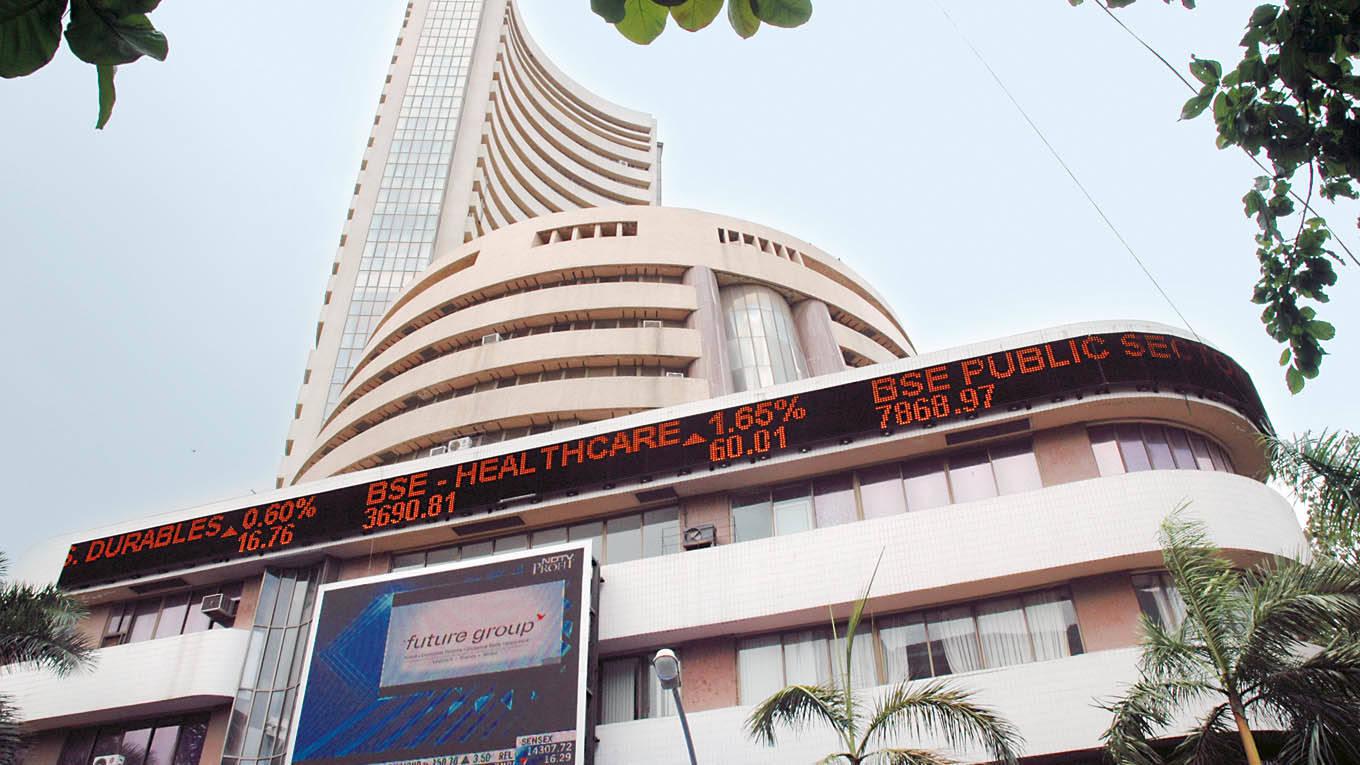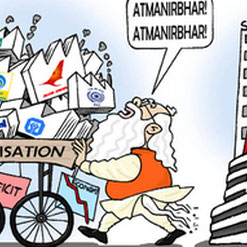-
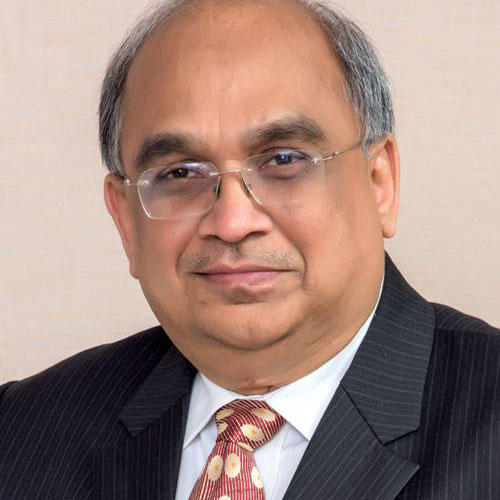
Shah: focus on individual stocks; Photo: Sanjay Borade
Indeed, this is also the fastest 10000 points traversed by the Sensex. On 3 October, the Sensex had just crossed 40000, again, post the pandemic the same may be covered in 325 sessions. In contrast the rally from 20000-30000 took 1,494 sessions, spanning a six-year period. The next 10000 was covered in 404 trading sessions and the current under 10000, under 325 sessions may well be the fastest since the index crossed 1000 in 1990 in value terms, if not percentage terms.
Even in the short run, the markets have performed exceedingly well. India, has, in fact, been in the top five best performing markets in the last six months, having given more than 34 per cent returns. Russia has given 46 per cent returns while Korea has given 40 per cent returns during the same period.
Markets are, in fact, mirroring the economy’s steadfast rise over the years. Deven Choksey, MD and founder of KR Choksey group, a Mumbai-based full service broking house, explains: “The economy took around 35 years to reach a GDP of $1 trillion. It may take five or six years to reach $5 trillion and the path to $10 trillion will be even faster. The pace of growth is really picking up.”
During the beginning of the pandemic fear had gripped the market leading to a sharp fall to 25600 levels on 25 March 2020. The government’s stimulus packages and deft handling of the pandemic along with the beginning of the vaccination drive has brought about a 360-degree change in sentiments.
“The point is that despite all hurdles India has grown fast,” Sundeep Sikka, Executive director and CEO, Nippon India AMC, concurs. “Fundamentally, the positive trend in the economy has been very clear. Ever since the BJP government has come in there is a political will to pursue growth. This is reflected in the stock markets and has been acknowledged by FIIs, more so over the last six months. While no one can visualise how Covid will pan out, India has done well for itself. The journey is clearly irreversible.”
Sikka points out that there is a strong emergence of domestic players in the markets, be they institutions, mutual funds or as individuals. This, he says, is reflected in the growth of demat accounts and is a testimony of the growing participation of the individual. “The emergence of direct investors is reflected in the enthusiastic response to mega IPOs and rights.”
-
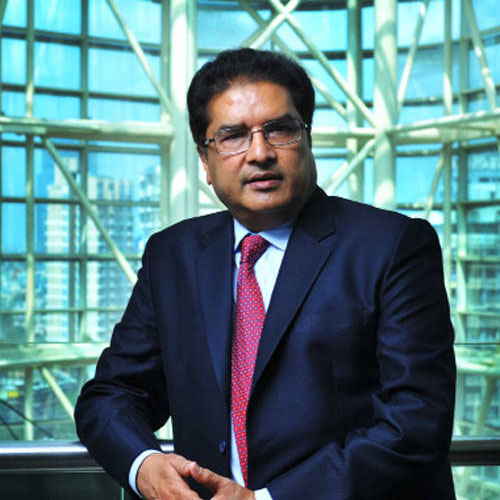
Agrawal: a landmark event; Photo: Sanjay Borade
Heightened retail participation
The total demat accounts in the country amount to a little under five crore. CDSL, the largest depository, has 2.82 crore, showing a growth of nearly 60 lakh accounts since 31 March, 2020. NSDL had 2.09 crore accounts at the end of 2020. Zerodha, the online discount brokerage house, has more than 10 lakh accounts. Work from home during the pandemic with more time in the hands of millennials saw the maximum number of new accounts being opened between March-December 2020.
The convenience of trading through apps and the low interest rates on bank deposits helped. As compared to the gloom and doom scenario in March 2020, “confidence levels are going up,” says Vijai Mantri, co-founder and chief strategist JRL Money. Mantri, who has experience in managing funds as the head of mutual funds earlier, says: “The economy is rebooting and growth has again become the new mantra. Besides FIIs, domestic inflows are also very strong.”
Direct investors’ participation has seen maximum participation in rights shares, the biggest being Reliance, which was able to collect Rs53,125 crore during the peak of the Covid period. The total funds raised through public markets was Rs1.17 crore, despite pandemic conditions prevailing across the country.
Of course, demat accounts are just a proxy for the total number of investors. Ashish Chauhan, MD and CEO, BSE, pointed out that, “BSE itself has a base of six crore investors, with 1.25 crore investors added in last year with a lot of youngsters joining. Besides investors invest in equity indirectly through provident fund, EPF, insurance companies, etc.”
A Balasubramanian, executive director and CEO, Birla Sunlife Mutual Funds exclaims that “India will be in a very sweet spot over the next 10 years. Structural reforms are being undertaken in agriculture, auto, taxation as also several other sectors”. He adds: “While interest rates have been going down for quite some time, we are seeing transmission of interest rates across sectors including smaller sectors. I am confident this will translate into higher earnings in the corporate sector. For FY21-22 I expect to see a 14-15 per cent increase in the EPS in Sensex and Nifty companies and 22 per cent and more in the subsequent year. This will spur investors’ interest even more.”
Expectations about the corporate sector doing well during the quarter ended December 2020 and the coming quarters is quite widespread. S Ranganathan, Research Head at L.K. Pandey says: “The next two-three years will be good for Indian equities. For one, the pandemic has forced the Indian sector to make certain structural changes in the way business is conducted and a substantial portion of these cost savings can be recurring in nature. This means that EPS growth, which has so far been elusive, will come back on a lower base.”
-
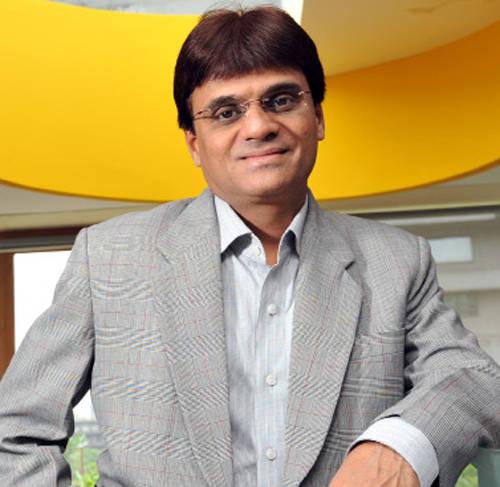
Choksey: pace of growth is picking up; Photo: Sanjay Borade
Like in the earlier bull runs, the rally leaders have been changing. Sector rotation is a continuous exercise. While finance spearheaded the earlier rally of 2003, this time around it was Reliance Industries which really transformed itself and in the process reignited the interest of investors. The company successfully transformed itself from an oil and gas commodity company to a conglomerate with its consumer facing telecom, Reliance Jio and retail businesses.
The global recognition in the potential of the new businesses saw several global marquee investors taking a share in the equity. The company became a zero debt company and was rerated at a much higher p/e than a commodity company. Pharma stocks saw keen interest amongst investors in the earlier part of the pandemic. This was replaced by IT stocks which have been in the forefront. TCS, Infosys, Wipro were fancied by investors. Currently, an eclectic mix of stocks is fuelling investors’ interest.
Will the rally sustain?
The big question which crops up during any bull run is to what extent the rally will continue. One big event which can change sentiments is the budget, which will be tabled before parliament on 1 February. There is one section which feels that the budget will impose Covid taxes to cut down its fiscal deficit. In particular to meet the huge expenses incurred during the pandemic. There is another school of thought which says the government may not really try and tinker with taxes in a way which will really queer the investment climate in the country. Especially as it has to push huge ticket divestment drives including LIC, BPCL and even Concor. Sentiments are such that even if the government were to do an IPO of Air India even at par value, it would get oversubscribed several times over!
Some feel that the government may content itself with imposing a Covid cess on GST or on corporate and individual income taxes. This may, however, meet with resistance from the states as the cess amount goes into the centre’s kitty and there is no provision as yet to share cess collections with the states. “The government should come out with some real innovative measures to raise resources,” says S Ranganathan, Head Research, L.K. Pandey, a Mumbai-based broking company which can be used to fund infrastructure projects as also provide funds for healthcare solutions for the country.
Mantri says: “If I were to see one defining trend, it will be on the tax front. Government wants more taxes but it will have to treat tax payers as the new VIPs. They will start expecting some tangible benefits.” There is widespread thinking that if there is a sharp correction ahead of the budget, markets will recover fast, post-budget. However, instead of second-guessing what the finance minister will do in the budget the best bet is to see the budget. Having faced the worst of the crisis, markets will adjust themselves sooner rather than later.
-
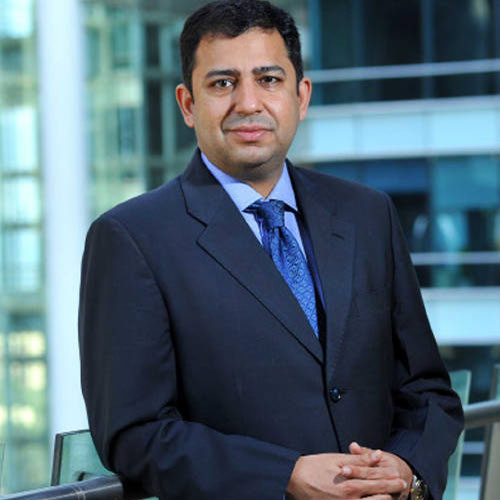
Sikka: India has grown fast; Photo: Sanjay Borade
Low interest, corporate earnings and FPI flows
Interest rates are low and keeping money in fixed deposits in banks is not a feasible option any longer. Domestic investment is happening in equity as investors are forced to take risks. Interest rates are low globally as governments are printing money to tide over the adverse impact of the pandemic. FPIs have pumped in more than Rs124 lakh crore in India in calendar year 2020 and has continued with investing another Rs21,000 crore till 21 January. Seeking higher returns in the growing emerging markets, they are expected to continue investing in emerging markets, at least till the end of the first half of the year. Liquidity is bound to remain solid for some time. All along, DIIs and MFs having been booking profits and awaiting an opportune time for reinvesting.
Low interest rates have also worked well for companies, many of which have been on a cost reduction drive in a bid to reduce debt and becoming leaner. This trend is likely to sustain post-Covid and will get reflected directly on the bottom line. Bankruptcies will be lower during a low interest regime.
Of course growth will not be equal. The government’s focus on the rural sector has also seen farm income growing. “The focus on the agriculture sector which sustains over 65 per cent of the population, will spur faster growth on the rural side than the urban,” says Choksey. He points out: “For once, the RBI and the government seem to be working in tandem. Government is planning systemically and ensuring growth in affordable housing, railways and infrastructure.”
While housing, particularly in the urban cities of Mumbai and Delhi are plagued by high prices and oversupply, the policies of government have really been working across rural India. The results of the companies in the third quarter have also been extremely positive, so far. Once the vaccination drive is over, as is expected over the next nine months or so, consumer spend is also expected to rise.
During the pandemic expenditures were curtailed to the basic necessities due to fear. One of these is the automobile industry. Post lockdown, a focus on personal mobility has seen a sharp rebound in demand for automobiles. While aviation, hotel industry, entertainment will take more time to recover, several others are at different stages of recovery and growth.
-
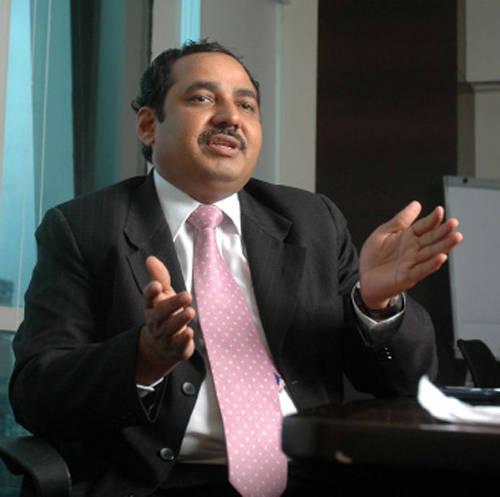
Balasubramanian: India will be in a sweet spot; Photo: Sanjay Borade
Ranganathan says: “Sectors which may see good growth are consumer sectors like appliances, retail, AMC and Insurance. Internet-based platform companies will do better. I am also bullish on PSU Banks, especially the large ones, besides refineries which I think will double in the next three years.” Choksey says, “Technology will grow fast. I am confident that India will be the technology leader in the near future”. Technology companies have really been the stars of the rally witnessed in the US. Besides IT and healthcare, Mantri is optimistic that the “realty sector will stage a recovery as will PSUs. Commodities will continue to do well”.
While the selection of industries which may do well can differ most experts are optimistic that India is clearly on the growth path and the growth in the coming couple of decades will be clearly redefining. GDP growth will really be fuelled by all three sectors of manufacturing, agriculture and services. What is missing is the Infra push and this is where the government has to step in, to really galvanise growth. The way forward is to ensure that the amount from privatisation is used for creating better infrastructure; a simplistic way of putting it is to remove roadblocks to ensure seamless mobility. Policy changes and a change in mindset will really push the wheels which will propel the economy. The combination of consumption demand with investment demand is the only way to reach a near double-digit growth in the coming years. And doubling GDP growth every six years.
Non-linear growth
Linear growth is certainly on the cards. But what about non-linear growth? Will there a few companies which could propel non-linear growth? Bharat Shah has a point when he explains that “non-linear growth is not permanent and very few companies, at least in the listed sector, are present.” “Technology or technology enabled companies can provide non-linear growth. A few finance companies have imbibed very good technology and this is reflected in the high premium it commands,”
Raamdeo Agrawal who also feels technology enabled companies will provide the next impetus to growth. He adds, “Private Insurance companies and even Telecom will see exponential growth over the next few years.” Once the infrastructure is all in place incremental revenue will add largely to the bottom line. The power of the internet has yet to be felt, he says. Agrawal is of the opinion that corporate profits are still low and there is headroom for doubling over the next couple of years.
-
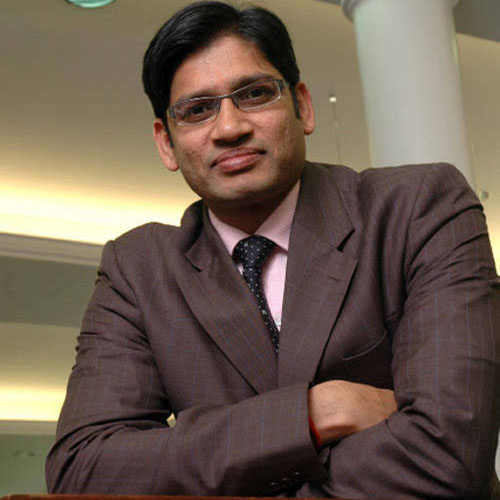
Mantri: realty, PSUs will stage a recovery; Photo: Sanjay Borade
A few start-ups, if listed, can provide this non-linear growth. India has built a good environment for start-ups to flourish. Experts claim that India could well become the start-up capital of the world in the near future. Once listed, these start-ups may see more exponential growth than traditional industries.
Of course there are challenges and the Sensex is not going to mimic a linear path of growth. There are too many expectations built into the prices, reflected in the high p/es. Sometimes one feels that investors are more optimistic than promoters or management of the companies. And companies will have to deliver – if not this fiscal, certainly over the next one.
If Corporate India is able to post a CAGR of 12-15 per cent, doubling profit from the current levels may happen sooner than one expects. While wealth creation will happen in a big way the only challenge is that it will be shared by a very narrow section of the population. While wealth socialisation is an utopian dream, the base of investors definitely should grow from the current five crore demat account. Accounts don’t have to be active, as depositories insist. More than trading, investment made at periodic intervals, with long term planning, is what is required. The more inactive the account, the better the chance for wealth creation. Traders only help bank depositories and brokers.
Policies to directly encourage retail participation are required. Markets dependent on FPIs cannot sustain themselves ad-infinitum. There have to be stronger Indian institutions and direct retail investors who can participate in wealth creation. While regulators and policy makers have not been able to do much to increase the participation of retail investors in debt instruments, it may be easier to educate potential income earners, especially from the younger age group and build their risk-taking appetite to enable them to participate directly in the wealth creation process. However, this is a debate for some other time. Currently, it is time to share the jubilation on Dalal Street.
